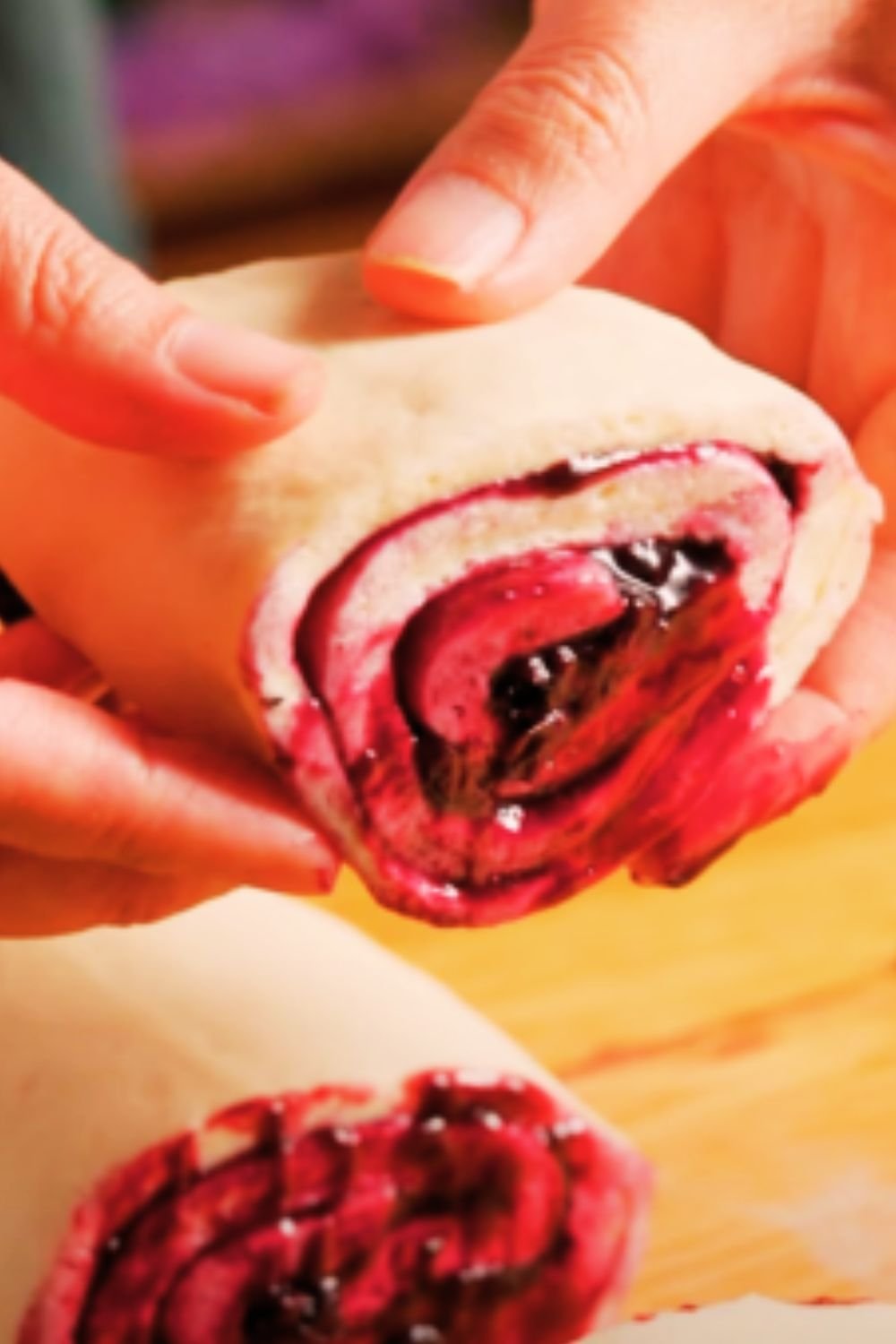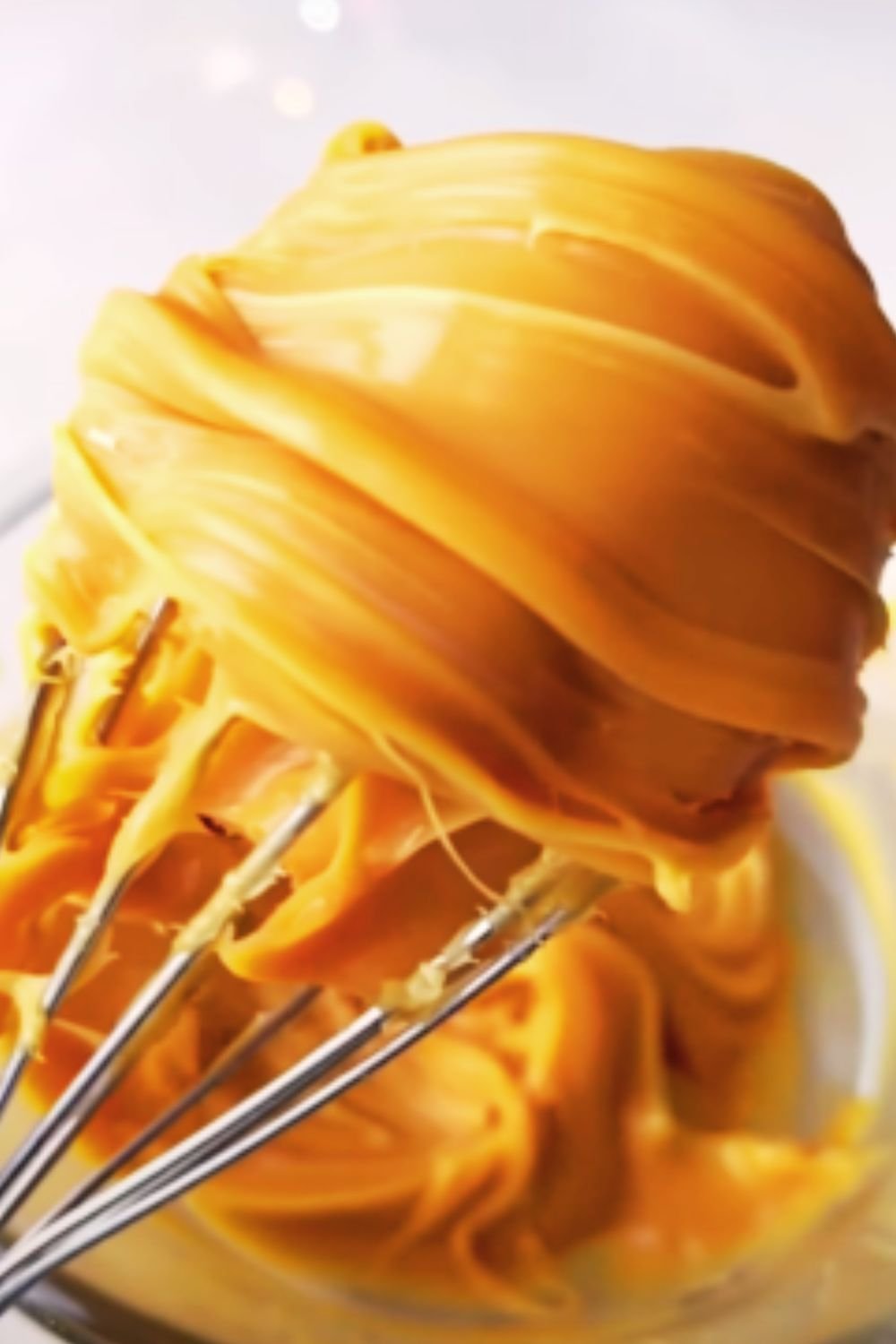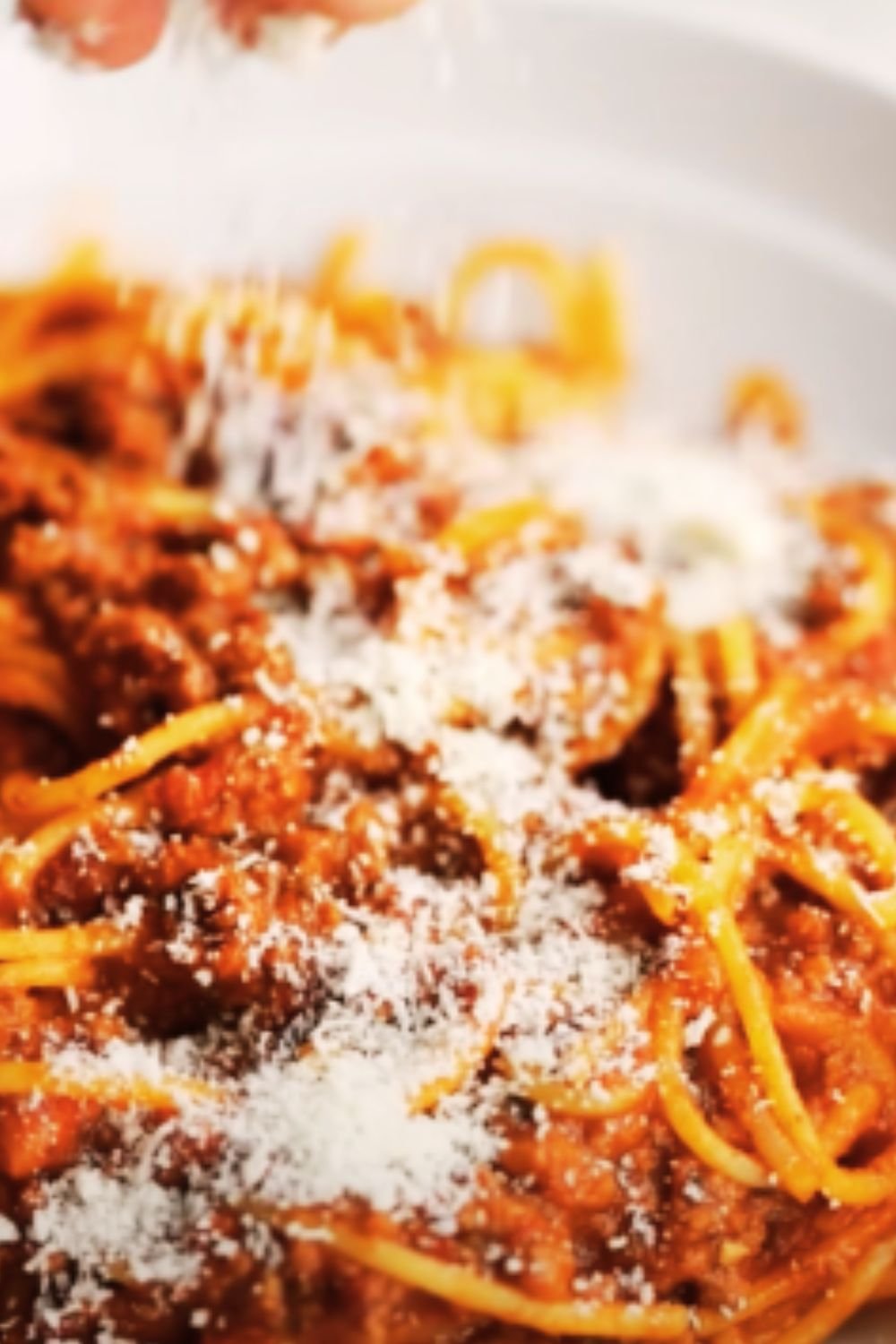There’s something magical about the aroma of sweet buns baking in the oven that instantly transports me back to my grandmother’s kitchen. The sweet scent of yeast dough mingling with wild blueberries and creamy ricotta creates an irresistible combination that beckons everyone to the kitchen. Today, I’m sharing my take on traditional Slavic-inspired Vatruschka buns with a modern twist – Wild Blueberry Ricotta Sweet Buns that will elevate your breakfast or dessert table to new heights.
These delightful treats draw inspiration from Eastern European baking traditions, specifically the beloved Vatruschka – a sweet bun with a distinctive depression in the center filled with sweetened cheese or fruit. My version combines the best of both worlds with a luscious wild blueberry and ricotta filling nestled in a pillowy soft, enriched dough. The result is nothing short of heavenly – tender, slightly sweet buns with pockets of creamy, fruity goodness that burst with flavor in every bite.
What makes these buns truly special is the balance of textures and flavors. The dough itself has just enough sweetness to complement the filling without overwhelming it. The wild blueberries add pops of tartness and vibrant color, while the ricotta brings a gentle creaminess that ties everything together. A light dusting of powdered sugar adds the perfect finishing touch.
Whether you’re looking to impress guests at brunch, create a special weekend breakfast for your family, or simply indulge in a sweet treat with your afternoon tea, these Wild Blueberry Ricotta Sweet Buns are guaranteed to delight. Let’s dive into this delicious baking adventure together!
The Magic of Vatruschka Buns
Vatruschka (also spelled vatrushka) holds a special place in Slavic culinary traditions. These open-faced sweet buns typically feature a ring of yeast dough with a center depression filled with sweetened farmer’s cheese (tvorog), cottage cheese, or sometimes fruit preserves. They represent centuries of baking tradition and are often enjoyed during holidays and special occasions.
What I love most about these traditional treats is their versatility. While honoring their Slavic roots, I’ve adapted the classic recipe to incorporate wild blueberries – a fruit that grows abundantly in many Eastern European forests. The addition of Italian ricotta cheese instead of the traditional tvorog creates a smoother, creamier filling while maintaining the spirit of the original.
These buns also tell a story of cultural exchange and adaptation. As recipes travel across borders, they evolve and take on new characteristics while preserving their essence. My version reflects this beautiful culinary evolution – respectful of tradition yet embracing new possibilities.
Ingredients You’ll Need
For the Dough:
- 3½ cups (440g) all-purpose flour
- ¼ cup (50g) granulated sugar
- 2¼ teaspoons (7g) active dry yeast
- ½ teaspoon salt
- ¾ cup (180ml) whole milk, warmed to 110°F (43°C)
- ¼ cup (60ml) water, warmed to 110°F (43°C)
- 1 large egg, room temperature
- ¼ cup (57g) unsalted butter, melted and cooled
- 1 teaspoon vanilla extract
- Zest of 1 lemon
For the Filling:
- 2 cups (450g) whole milk ricotta cheese
- ⅓ cup (67g) granulated sugar
- 1 large egg
- 2 tablespoons all-purpose flour
- 1 teaspoon vanilla extract
- ¼ teaspoon almond extract (optional)
- 2 cups (300g) fresh or frozen wild blueberries (do not thaw if frozen)
- 2 tablespoons lemon juice
- 1 tablespoon lemon zest
For the Egg Wash & Finish:
- 1 egg beaten with 1 tablespoon water
- Powdered sugar for dusting
Equipment List
Before we begin, let’s make sure you have everything you need:
- Stand mixer with dough hook attachment (or large bowl if mixing by hand)
- Measuring cups and spoons
- Large mixing bowl
- Medium mixing bowl
- Wooden spoon or silicone spatula
- Kitchen scale (optional but recommended for precision)
- Pastry brush
- Rolling pin
- Baking sheets
- Parchment paper
- Kitchen towels
- Wire cooling rack
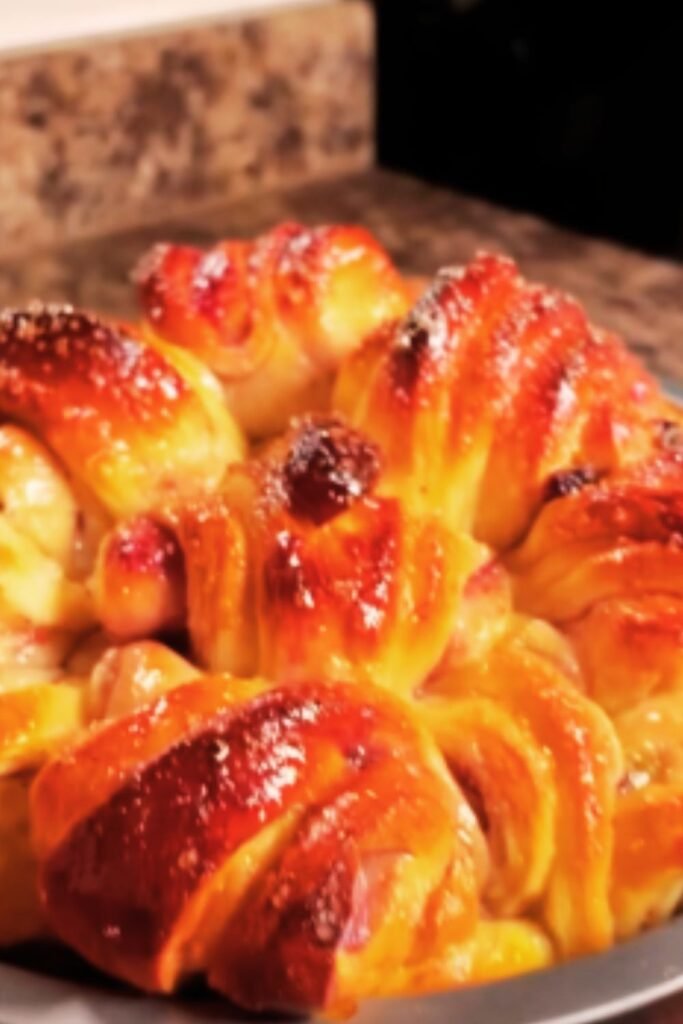
Step-by-Step Instructions
Preparing the Dough
- In the bowl of a stand mixer fitted with the dough hook attachment, combine 3 cups of flour, sugar, yeast, and salt.
- In a separate bowl, whisk together the warm milk, warm water, egg, melted butter, vanilla extract, and lemon zest.
- With the mixer running on low speed, gradually pour the wet ingredients into the dry ingredients.
- Mix until the dough comes together, about 2 minutes. If the dough seems too sticky, add the remaining ½ cup of flour, 1 tablespoon at a time, until the dough pulls away from the sides of the bowl but still feels slightly tacky.
- Increase the speed to medium-low and knead for 5-7 minutes, until the dough is smooth, elastic, and passes the “window pane test” (when a small piece can be stretched thin enough to see light through without tearing).
- Transfer the dough to a lightly oiled bowl, turning once to coat. Cover with a clean kitchen towel or plastic wrap.
- Let the dough rise in a warm, draft-free place for 1 to 1½ hours, or until doubled in size.
Note: If you’re making the dough by hand, mix the ingredients in a large bowl with a wooden spoon until combined, then turn out onto a floured surface and knead for 8-10 minutes until smooth and elastic.
Making the Filling
While the dough rises, prepare your filling:
- In a medium bowl, combine the ricotta cheese, sugar, egg, flour, vanilla extract, and almond extract (if using). Mix until smooth and well incorporated.
- In a separate small bowl, gently toss the wild blueberries with lemon juice and zest.
- Refrigerate both mixtures until ready to use.
Shaping and Filling the Buns
- Line two baking sheets with parchment paper.
- After the dough has doubled in size, gently punch it down to release excess air.
- Turn the dough out onto a lightly floured surface and divide it into 12 equal portions (about 85-90g each if using a scale).
- Roll each portion into a ball, then flatten into a 4-inch circle using your palm or a rolling pin.
- Place the circles on the prepared baking sheets, spacing them at least 3 inches apart.
- Using the bottom of a drinking glass (about 2 inches in diameter) or your fingers, press firmly into the center of each dough circle to create a deep depression, leaving a 1-inch border around the edge.
- Place 1½ tablespoons of the ricotta mixture into each depression.
- Top each with 1 tablespoon of the wild blueberry mixture.
- Cover the buns loosely with kitchen towels and let them rise for another 30 minutes.
Baking
- Preheat your oven to 375°F (190°C) while the buns are completing their second rise.
- Just before baking, brush the exposed dough borders with egg wash.
- Bake the buns for 18-22 minutes, or until the edges are golden brown and the filling is set.
- Remove from the oven and let cool on the baking sheets for 5 minutes before transferring to a wire rack to cool completely.
- Once cooled, dust with powdered sugar before serving.

Nutrition Information
These Wild Blueberry Ricotta Sweet Buns aren’t just delicious – they also provide a range of nutrients. Here’s a breakdown of the approximate nutritional content per bun:
| Nutrient | Amount per Bun | % Daily Value* |
|---|---|---|
| Calories | 285 kcal | 14% |
| Total Fat | 9.5g | 12% |
| – Saturated Fat | 5.6g | 28% |
| Cholesterol | 63mg | 21% |
| Sodium | 145mg | 6% |
| Total Carbohydrates | 42g | 15% |
| – Dietary Fiber | 1.8g | 6% |
| – Sugars | 14.2g | 28% |
| Protein | 9.3g | 19% |
| Calcium | 122mg | 9% |
| Iron | 1.8mg | 10% |
| Potassium | 165mg | 3.5% |
| Vitamin C | 6.2mg | 7% |
| Vitamin D | 0.3μg | 2% |
*Percent Daily Values are based on a 2,000 calorie diet. Your daily values may be higher or lower depending on your calorie needs.
Tips for Perfect Buns Every Time
My journey to perfecting these buns has taught me several valuable lessons that I’m excited to share with you:
- Temperature matters: Ensure your milk and water are around 110°F (43°C) – warm enough to activate the yeast but not so hot that it kills it. If you don’t have a thermometer, the liquid should feel warm to the touch but not hot.
- Don’t rush the rise: The slow rise of the dough develops flavor and ensures a tender crumb. If your kitchen is cold, create a warm environment by briefly heating your oven, then turning it off and placing the dough inside with the door cracked.
- Prevent soggy bottoms: If your blueberries are particularly juicy, toss them with 1 tablespoon of cornstarch along with the lemon juice to help thicken the juices as they bake.
- Even sizing: For professional-looking buns, weigh each portion of dough to ensure they’re all the same size. This also helps them bake evenly.
- Watch the bake: Oven temperatures can vary, so start checking your buns at the 15-minute mark. The edges should be golden brown, not dark brown.
- Seasonal variations: While wild blueberries offer the best flavor and hold their shape well during baking, you can substitute other berries like raspberries, blackberries, or strawberries (chopped into small pieces). Each will create a unique flavor profile.
Make-Ahead and Storage Options
These buns are at their absolute best fresh from the oven, but modern life doesn’t always allow for same-day baking. Here are some options to fit baking these delightful treats into your schedule:
Make-Ahead Options:
- Refrigerate the shaped, unbaked buns: After shaping and filling the buns, cover them tightly with plastic wrap and refrigerate for up to 12 hours. When ready to bake, let them sit at room temperature for 30-45 minutes before baking as directed.
- Prepare the dough in advance: Complete the first rise, then punch down the dough, wrap it tightly in plastic wrap, and refrigerate for up to 24 hours. When ready to proceed, let the dough sit at room temperature for 30 minutes before shaping.
- Freeze the shaped, unbaked buns: After shaping and filling, place the buns on a baking sheet and freeze until solid. Transfer to a freezer-safe container and freeze for up to 1 month. Thaw overnight in the refrigerator, then allow to come to room temperature and complete the second rise (about 1-1.5 hours) before baking.
Storage Options:
- Room temperature: Store cooled buns in an airtight container for up to 2 days. Reheat briefly in a 300°F (150°C) oven for 5-7 minutes to refresh.
- Refrigerator: Store in an airtight container for up to 5 days. Bring to room temperature or warm slightly before serving.
- Freezer: Wrap baked and cooled buns individually in plastic wrap, then place in a freezer bag for up to 3 months. Thaw at room temperature and warm in a 300°F (150°C) oven for 8-10 minutes.
Serving Suggestions
These versatile sweet buns can be enjoyed in various ways:
- Serve warm with a dollop of crème fraîche or Greek yogurt for breakfast
- Pair with fresh fruit and a cup of tea for an elegant afternoon snack
- Create a stunning dessert by warming the buns and topping with a scoop of vanilla ice cream
- Include in a brunch spread alongside savory options like quiche or frittata
- Pack in lunchboxes for a special midday treat
- Arrange on a tiered stand for baby showers or bridal teas
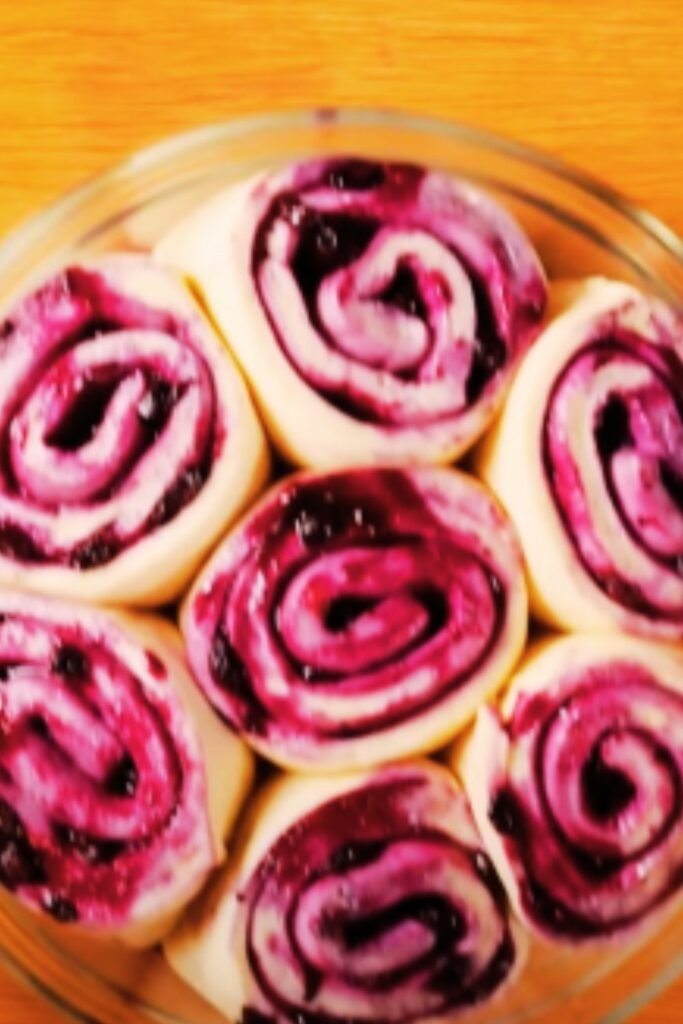
Cultural Variations and History
The beauty of recipes like Vatruschka is how they evolve across different regions and families. Here’s a glimpse into some fascinating variations:
- In Russia, traditional vatrushki often feature a cottage cheese (tvorog) filling, sometimes mixed with raisins and topped with a crumb streusel.
- Ukrainian versions might include savory fillings like potato and mushroom.
- Polish sweet cheese buns, called drożdżówki z serem, are similar but often shaped as squares or rectangles.
- In Belarus, these buns might feature seasonal berries from the abundant forests.
- Baltic variations sometimes include caraway seeds in the dough for a unique flavor profile.
The history of these buns dates back centuries, with earliest mentions in Slavic literature from the 12th century. They were traditionally associated with the sun because of their round shape with a bright center, symbolizing fertility and harvest abundance. Historically, they were prepared for important celebrations and religious holidays, serving as both sustenance and symbolic offerings.
By making these Wild Blueberry Ricotta Sweet Buns, you’re not just creating a delicious treat – you’re participating in a culinary tradition that spans generations and crosses borders.
Frequently Asked Questions
Q: Can I use regular blueberries instead of wild blueberries?
Absolutely! Regular blueberries work beautifully in this recipe. Wild blueberries are smaller and more intensely flavored, so they distribute more evenly throughout the filling, but standard blueberries will still create a delicious result. If using larger blueberries, you might want to cut them in half for better distribution.
Q: My dough isn’t rising. What went wrong?
Several factors could affect dough rising. First, check that your yeast is fresh and active. If using active dry yeast, it should foam when proofed in warm liquid. Also, ensure your environment is warm enough – dough rises best between 75-85°F (24-29°C). If your kitchen is cool, create a warm spot by placing the covered dough near (not on) a heating vent or in a turned-off oven with just the light on.
Q: Can I substitute the ricotta cheese?
Yes! Traditional Vatruschka buns use farmer’s cheese or cottage cheese. You can substitute drained cottage cheese, quark, or mascarpone. Each will provide a slightly different texture and flavor profile. If using cottage cheese, I recommend blending it briefly for a smoother consistency.
Q: My filling leaked out during baking. How can I prevent this?
Make sure you create a deep enough depression in the center of each dough circle, with a substantial border around the edge. The border should be at least 1-inch wide and slightly raised above the center. Also, avoid overfilling – stick to the recommended amounts in the recipe. Finally, ensure your second rise isn’t too long, as over-proofed dough can lose its structure.
Q: Can I make these buns dairy-free?
With some adjustments, yes! Replace the milk with almond or oat milk, and use a plant-based butter alternative. For the filling, dairy-free cream cheese (such as those made from almonds or cashews) can substitute for ricotta, though the texture will be different. You’ll need to experiment with sweetness levels, as plant-based alternatives may require different amounts of sugar.
Q: How can I tell when the buns are properly baked?
Look for golden brown edges on the dough and a filling that appears set (not liquid). The bottoms should be lightly browned as well. If using an instant-read thermometer, the center of the dough portion should register around 190°F (88°C).
Embrace the Joy of Baking
As I knead the dough for these Wild Blueberry Ricotta Sweet Buns, I’m always reminded of how baking connects us – to our heritage, to seasons, to loved ones who gather around the table. There’s something deeply satisfying about transforming simple ingredients into something extraordinary with your own hands.
These buns represent more than just a delicious treat; they’re a celebration of cultural exchange and culinary creativity. The careful balance of sweet dough, creamy ricotta, and tart wild blueberries creates a harmony of flavors that feels both nostalgic and exciting.
I encourage you to make this recipe your own. Perhaps you’ll fold in some cardamom or cinnamon to the dough, or experiment with different seasonal fruits. Maybe you’ll create a family tradition of baking these for special Sunday breakfasts or holiday mornings. Whatever your approach, I hope these Slavic-inspired buns bring as much joy to your kitchen as they have to mine.
The process – from activating the yeast to watching the dough rise, from shaping each bun to that moment when the sweet aroma fills your home – is a journey worth savoring. In our fast-paced world, there’s profound pleasure in slow food traditions like these.
So roll up your sleeves, dust your countertop with flour, and embark on this delicious baking adventure. Your efforts will be rewarded with not just delectable Wild Blueberry Ricotta Sweet Buns, but also with the irreplaceable satisfaction that comes from creating something wonderful from scratch.

